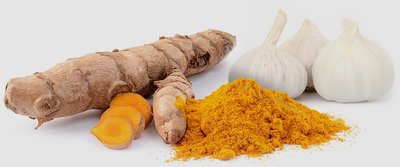High blood pressure, aka hypertension, is the stealthy, sometimes invisible killer of millions of people in the United States and around the world every year. Often, you won't feel a thing for years, even decades, while the damage to your cardiovascular system mounts. Finally, one day, when blasting through a workout or simply relaxing, it happens—a heart attack or stroke that either ends or forever alters your life.
This condition affects one in three Americans, and once their blood pressure rises, it's very hard to bring down. For most people, this involves relaxing and sleeping more, exercising regularly, taking medications daily, and perhaps hardest of all, changing eating habits. The cruel twist? Feeling stressed by all of this will only make things worse.1
Normalizing blood pressure is one of the most important things—if not the most important thing—you can do to improve your health and increase your life span. Fortunately, many foods can lower blood pressure naturally. Rather than cutting things out, science shows that you can really benefit from adding these into your diet.
1. Beetroot
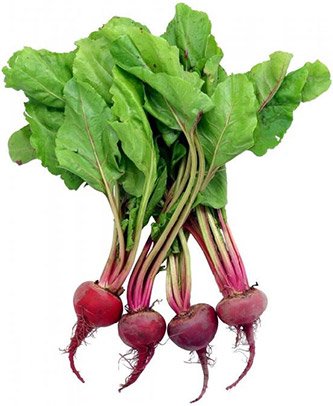
Nitrates and nitrites are compounds that play a big part in our metabolic system. The influence they have can be quite confusing, but it's definitely worth understanding if you've got blood-pressure problems.
Many believe nitrates and nitrites are unnatural, although that's not actually the case. They are commonly added to foods as preservatives, but they are also naturally produced by your body for saliva.2,3 Nitrates and nitrites can be converted into two different compounds: nitrosamines (very bad) or nitric oxide (very good).
Nitrosamines are produced when nitrites are exposed to extremely high temperatures. Think frying nitrites in preservative-loaded bacon, or the nitrites in cigarettes. Most of these increase your risk for cancer.4
Nitric oxide (NO), on the other hand, acts as a signaling molecule, one that is typically beneficial to health. It gives signals to the cells in your arteries, telling them to soften and relax.5,6 This action greatly improves vasodilation, which reduces blood pressure.7-9
For this reason, nitrate-rich foods that are not exposed to very high heat are beneficial because they can become nitric oxide. What most don't realize is that vegetables are the largest source of nitrates in the human diet.7
2. Garlic
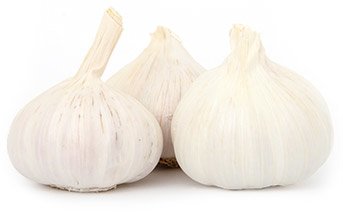
Did you know garlic was not historically used for cooking?
Throughout history, garlic's main use was for health and medicinal purposes. This has been documented by major civilizations such as the ancient Egyptians, Babylonians, Greeks, Romans and Chinese.12,13 The active ingredient in garlic is allicin, a sulphur compound formed when a garlic clove is crushed, chopped or chewed.
Considering that garlic also reduces low-density lipoprotein (LDL) cholesterol by 10-15 percent, adding more to your diet is an absolute necessity, in my opinion.15,18,19 These results have been seen with supplementation of 600-1,200 milligrams per day—equal to eating at least two garlic cloves daily.
There is one strong side effect though: garlic breath!
3. Fish Oil
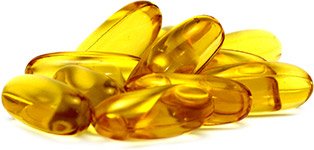
Fish oil refers to the natural fatty acids found in certain fish species. These fatty acids—such as omega-3 fats—are extremely beneficial to human cardiovascular health.
The mechanism of effect is not clear, but most experts believe it has to do with the omega-6: omega-3 ratio. Essentially, having more omega-3 fats in your diet (compared to omega-6 fats) is better for your heart health. A 1:1 ratio is linked with much healthier and stronger blood vessels.25
Our ancestors were thought to have a ratio of between 1:1 and 4:1 (omega-6:omega-3). However, due to the heavy use of vegetable oils today, the average Western diet has a ratio of 16:1.26,27 In other words, for every 16 grams of omega-6 fats consumed, we consume only 1 gram of omega-3.
The best way to do this is by consuming more omega-3 fats such as oily fish, olive oil, walnuts, and flaxseed. It also helps to limit other seed/vegetable oils, which tend to be high in omega-6 fats.
Fish oil supplements are an effective and more affordable alternative to eating oily fish. However, if you have access to fish, 2-3 servings per week should provide heart-healthy benefits.
4. Cashews and Almonds
Tree nuts—not to be confused with peanuts, which come from the ground—are linked with many metabolic health benefits. Almonds and cashews really stand out, particularly when it comes to metabolic problems such as high blood pressure.
What makes them so influential is their rich magnesium content. Magnesium is an essential mineral involved in over 300 bodily process.29 A lack of magnesium in the diet is strongly associated with blood pressure complications. Replacing that lack of magnesium has been shown in numerous studies to greatly reduce high blood pressure.31-36 Approximately 68 percent of U.S. adults are magnesium-deficient.37

"Tree nuts—not to be confused with peanuts, which come from the ground—are linked with many metabolic health benefits."
The current recommended daily intake for magnesium in the U.S. is 310-420 milligrams.39 One cup of almonds or cashews provides 360 milligrams, which is what I recommend to clients to help maintain optimum levels.
5. Kale
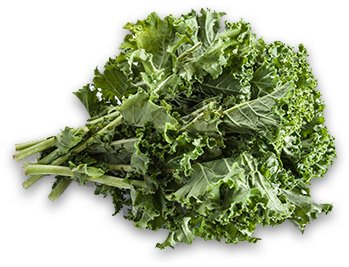
Kale is one of the few "superfoods" that actually earns that moniker. Like spinach, it's loaded with vitamins, minerals, antioxidants, and other compounds known to help prevent disease.
However, the reason kale may reduce high blood pressure is because of its unique nutrient profile. It's rich in magnesium, potassium and vitamin C.40 A diet high in potassium is strongly linked to lower blood pressure.41 This could be because magnesium's effect on blood pressure is enhanced when combined with more potassium. In some cases, this combination can lower blood pressure as much as medications.42
Unfortunately most people no longer consume much potassium. Our hunter-gatherer ancestors consumed around 10,500 milligrams of potassium per day, whereas the average American today takes in only 2,800 milligrams per day.43
I prefer kale over spinach because it has four times more vitamin C! Similar to the potassium-magnesium relationship, vitamin C appears to increase the blood-pressure-lowering effects of magnesium as well as increase potassium in the blood.38,44
Kale's nutrient trio of magnesium, potassium, and vitamin C makes it unrivalled for blood-pressure control and minimizing disease risk. If you only pick one leafy green vegetable, make it kale.
6. Stevia
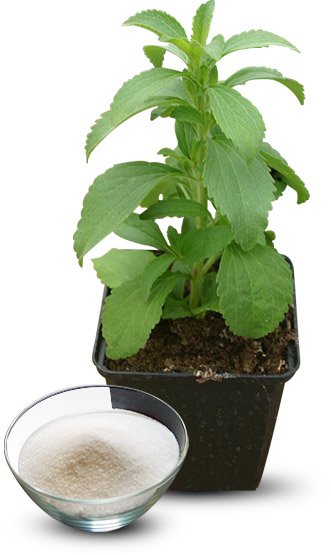
With refined sugar now recognized as harmful, sweetener alternatives have become incredibly common. Stevia is one of the more popular choices. It's is one of the few natural sweeteners, it doesn't jack up your blood sugar, and it doesn't have the same health question marks that dog many artificial sweeteners on the market.
The two active ingredients that make stevia sweet are called stevioside and rebaudioside A.
A one-year trial on participants with high blood pressure found that those given 750 milligrams stevioside per day decreased their systolic blood pressure by 8.1 percent and diastolic blood pressure by 13.8 percent after three months. Impressively, they were able to maintain this reduction for the next nine months.45
Another study using high doses of stevioside (1,500 milligrams per day) noted that after two years, blood pressure decreased by 6.5 percent.46
Several studies failed to find any health benefits; however, these were very short-term and used healthy participants.47,48 Sweetener users are typically in it for the long haul.
If you're looking to replace sugar, or are already using another type of sweetener, stevia appears to be the best choice for those with elevated blood pressure. It's by no means a quick fix, but the long-term effects seem to be safe and may even be beneficial.
7. Turmeric
Turmeric is a popular Indian curry spice. For centuries, Indians used it not only in their cooking but also as a medicinal herb. And they were on to something.
Turmeric's medicinal properties have only recently been confirmed by science and are very impressive.49 The main active ingredient in turmeric is curcumin, which has powerful anti-inflammatory effects in the body.

"Turmeric's medicinal properties have only recently been confirmed by science and are very impressive."
The benefits curcumin has on blood flow and blood pressure are believed to be related to nitric oxide, similar to beetroot mentioned above. Supplementation of curcumin has shown to increase circulating nitric oxide, in some cases by up to 40 percent in just four weeks.52,53 These potential cardiovascular benefits are too great to ignore, especially if you are at high risk of complications.
There is just one problem with curcumin: Humans are very bad at absorbing it. For any noticeable health benefits, it is essential to consume curcumin with an enhancer such as black pepper. Black pepper contains piperine, a substance that boosts curcumin absorption by a whopping 2,000 percent.54
Add plenty of pepper to your turmeric-based curry.
8. Green Tea
Traditionally from China, green tea is loaded with an array of powerful compounds and antioxidants unrivalled by any other food.55
The reason tea—green tea in particular—is so beneficial is because of its polyphenols. One particular green tea polyphenol, known as catechin, has shown to improve blood flow and blood pressure. Like beetroot and curcumin, the mechanism is thought to involve nitric oxide.56-59

"Traditionally from China, green tea is loaded with an array of powerful compounds and antioxidants unrivalled by any other food."
A large review of green tea confirmed that two cups per day (500 milliliters) can increase arterial diameter by up to 40 percent.60 Just as wider pipes will increase water flow, wider and more relaxed blood vessels increase blood flow, reducing pressure. It's no real surprise then that regular green tea drinkers have up to a 31 percent lower risk of cardiovascular disease.61-63
9. Green Coffee
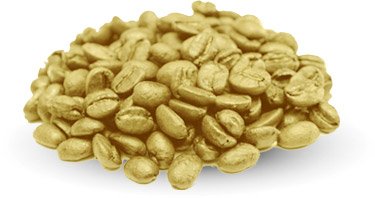
Coffee beans are naturally green, but roasting turns them brown. So in essence, green coffee is just another name for unroasted coffee.
While roasted coffee beans have a similar chemical composition to green coffee beans, the roasting process destroys much of its chlorogenic acid.64 This is the active ingredient that gives green coffee beans additional health properties. It's also the ingredient extracted for use in supplements such as green coffee bean extract.65
While green coffee bean extract may not be the "weight-loss miracle" Dr. Oz claimed, it does appear to benefit blood flow, at least in the short term.66,67
Try swapping your regular coffee for green coffee and then checking for any blood pressure changes after a month.
10. Vitamin K2
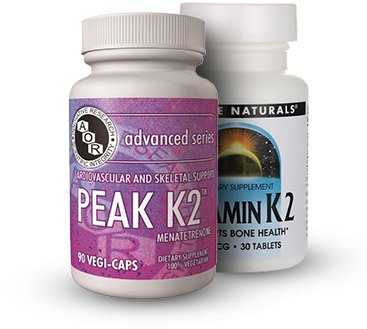
For decades we were told to cut all fats from our diets. Unfortunately, these recommendations were based on bad science.
In looking at fat intake and blood pressure specifically, full-fat dairy may be beneficial as it contains vitamin K2. Vitamin K2 helps regulate where calcium ends up in the body. It works to keep calcium in your bones, and removes it from blood vessels where it can cause arterial stiffness and calcification.69,70
While no studies exist measuring the direct effect of K2 on blood pressure yet, it makes sense that it would be beneficial given its relationship with vascular health.71-74
A soon-to-be published observational study—one of Europe's biggest—found that those who eat eight portions of high-fat dairy per day are 23 percent less likely to get type 2 diabetes than those eating one portion per day.75 Blood pressure is a key predictor of vascular diseases such as heart disease and type 2 diabetes.
Full-fat, grass-fed dairy products are by far the best sources of vitamin K2. This includes butter, cheese, full-fat yogurt, and ghee. Liver and other organs are good sources too, as are fermented foods such as sauerkraut, natto and miso.76,77
In my opinion, we should all be increasing our vitamin K2 intake as a preventative measure for heart health. This is especially true if you are particularly vulnerable to artery calcification from having diabetes or a family history of high cholesterol and blood pressure.
11. Extra-Virgin Olive Oil
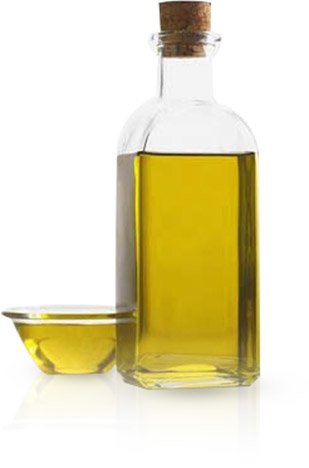
Olive oil is probably the healthiest oil in the world. It's a staple of Mediterranean-style diets, and is rich in heart-healthy monounsaturated fats and phenolic antioxidants. "Extra-virgin" olive oil has the highest levels of beneficial components because it is the least processed form of olive oil.
The cardiovascular benefits of olive oil are certainly no secret, with one major study finding it reduced heart attacks, strokes, and death by a whopping 30 percent.79
It's no surprise then that olive oil is a fantastic food for lowering blood pressure.
In a study of 23 participants with high blood pressure, extra-virgin olive oil reduced blood pressure by 48 percent compared with sunflower oil.
Your Diet Is Just the Beginning
Of course, many other factors influence blood pressure too. These include physical activity, adequate sleep, sun exposure, meditation, and other stress-management practices. In the end, however, the majority of these link back to diet. What goes into your mouth is certainly the most influential factor at play.
There are so many natural foods that may help lower your blood pressure. It's just a matter of trying them out for yourself.
References
- Greenage, M., Kulaksizoglu, B., Cilingiroglu, M., & Ali, R. (2011). The role of anxiety and emotional stress as a risk factor in treatment-resistant hypertension. Current Atherosclerosis Reports, 13(2), 129-131.
- Lundberg, J. O., Carlström, M., Larsen, F. J., & Weitzberg, E. (2011). Roles of dietary inorganic nitrate in cardiovascular health and disease. Cardiovascular Research, 89(3), 525-532.
- Lundberg, J. O. (2012). Nitrate transport in salivary glands with implications for NO homeostasis. Proceedings of the National Academy of Sciences, 109(33), 13144-13145.
- Brown JL. (1999). N-Nitrosamines. Occupational Medicine, 14(4):839-848.
- Kröncke, K. D., Fehsel, K., & Kolb-Bachofen, V. (1997). Nitric oxide: cytotoxicity versus cytoprotection—how, why, when, and where? Nitric oxide, 1(2), 107-120.
- Moncada, S., & Higgs, E. A. (2006). Nitric oxide and the vascular endothelium. In the Vascular Endothelium I (pp. 213-254). Springer Berlin Heidelberg.
- Hord, N. G., Tang, Y., & Bryan, N. S. (2009). Food sources of nitrates and nitrites: the physiologic context for potential health benefits. The American Journal of Clinical Nutrition, 90(1), 1-10.
- Siervo, M., Stephan, B. C. M., Feelisch, M., & Bluck, L. J. C. (2011). Measurement of in vivo nitric oxide synthesis in humans using stable isotopic methods: a systematic review. Free Radical Biology and Medicine, 51(4), 795-804.
- Kelm, M. (1999). Nitric oxide metabolism and breakdown. Biochimica et Biophysica Acta (BBA)-Bioenergetics, 1411(2), 273-289.
- Siervo, M., Lara, J., Ogbonmwan, I., & Mathers, J. C. (2013). Inorganic nitrate and beetroot juice supplementation reduces blood pressure in adults: a systematic review and meta-analysis. The Journal of Nutrition, 143(6), 818-826.
- Chobanian, A. V., Bakris, G. L., Black, H. R., Cushman, W. C., Green, L. A., Izzo, J. L., ... & Roccella, E. J. (2003). Seventh report of the joint national committee on prevention, detection, evaluation, and treatment of high blood pressure. Hypertension, 42(6), 1206-1252.
- Morihara, N., Nishihama, T., Ushijima, M., Ide, N., Takeda, H., & Hayama, M. (2007). Garlic as an anti-fatigue agent. Molecular Nutrition & Food Research, 51(11), 1329-1334.
- Rivlin, R. S. (2001). Historical perspective on the use of garlic. The Journal of Nutrition, 131(3), 951S-954S.
- Dhawan, V., & Jain, S. (2005). Garlic supplementation prevents oxidative DNA damage in essential hypertension. Molecular and Cellular Biochemistry, 275(1-2), 85-94.
- Sobenin, I. A., Andrianova, I. V., Demidova, O. N., Gorchakova, T., & Orekhov, A. N. (2008). Lipid-lowering effects of time-released garlic powder tablets in double-blinded placebo-controlled randomized study. Journal of Atherosclerosis and Thrombosis, 15(6), 334-338.
- Ried, K., Frank, O. R., & Stocks, N. P. (2010). Aged garlic extract lowers blood pressure in patients with treated but uncontrolled hypertension: a randomised controlled trial. Maturitas, 67(2), 144-150.
- Ashraf, R., Khan, R. A., Ashraf, I., & Qureshi, A. A. (2013). Effects of Allium sativum (garlic) on systolic and diastolic blood pressure in patients with essential hypertension. Pakistan Journal of Pharmaceutical Science, 26, 859-863.
- Adler, A. J., & Holub, B. J. (1997). Effect of garlic and fish-oil supplementation on serum lipid and lipoprotein concentrations in hypercholesterolemic men. The American Journal of Clinical Nutrition, 65(2), 445-450.
- Kojuri, J., Vosoughi, A. R., & Akrami, M. (2007). Effects of anethum graveolens and garlic on lipid profile in hyperlipidemic patients. Lipids in Health and Disease, 6(5), 1476-512.
- Mori, T. A., Bao, D. Q., Burke, V., Puddey, I. B., & Beilin, L. J. (1999). Docosahexaenoic acid but not eicosapentaenoic acid lowers ambulatory blood pressure and heart rate in humans. Hypertension, 34(2), 253-260.
- Lozovoy, M. A. B., Bahls, L. D., Morimoto, H. K., Matsuo, T., & Dichi, I. (2012). Blood pressure decrease with ingestion of a soya product (kinako) or fish oil in women with the metabolic syndrome: role of adiponectin and nitric oxide. British Journal of Nutrition, 108(08), 1435-1442.
- Campbell, F., Dickinson, H. O., Critchley, J. A., Ford, G. A., & Bradburn, M. (2013). A systematic review of fish-oil supplements for the prevention and treatment of hypertension. European Journal of Preventive Cardiology, 20(1), 107-120.
- Ramel, A., Martinez, J. A., Kiely, M., Bandarra, N. M., & Thorsdottir, I. (2010). Moderate consumption of fatty fish reduces diastolic blood pressure in overweight and obese European young adults during energy restriction. Nutrition, 26(2), 168-174.
- Axelrod, L., Camuso, J., Williams, E., Kleinman, K., Briones, E., & Schoenfeld, D. (1994). Effects of a small quantity of Omega-3 fatty acids on cardiovascular risk factors in NIDDM: a randomized, prospective, double-blind, controlled study. Diabetes Care, 17(1), 37-44.
- Simopoulos, A. P. (2008). The importance of the omega-6/omega-3 fatty acid ratio in cardiovascular disease and other chronic diseases. Experimental Biology and Medicine, 233(6), 674-688.
- Simopoulos, A. P. (2006). Evolutionary aspects of diet, the omega-6/omega-3 ratio and genetic variation: nutritional implications for chronic diseases. Biomedicine & Pharmacotherapy, 60(9), 502-507.
- Blasbalg, T. L., Hibbeln, J. R., Ramsden, C. E., Majchrzak, S. F., & Rawlings, R. R. (2011). Changes in consumption of omega-3 and omega-6 fatty acids in the United States during the 20th century. The American Journal of Clinical Nutrition, 93(5), 950-962.
- De Lorgeril, M., Renaud, S., Salen, P., Monjaud, I., Mamelle, N., Martin, J. L., ... & Delaye, J. (1994). Mediterranean alpha-linolenic acid-rich diet in secondary prevention of coronary heart disease. The Lancet, 343(8911), 1454-1459.
- Swaminathan, R. (2003). Magnesium metabolism and its disorders. The Clinical Biochemist Reviews, 24(2), 47.
- Corica, F., Allegra, A., Ientile, R., & Buemi, M. (1997). Magnesium concentrations in plasma, erythrocytes, and platelets in hypertensive and normotensive obese patients. American Journal of Hypertension, 10(11), 1311-1313.
- De Valk, H. W., Verkaaik, R., Van Rijn, H. J. M., Geerdink, R. A., & Struyvenberg, A. (1998). Oral magnesium supplementation in insulin-requiring Type 2 diabetic patients. Diabetic Medicine, 15(6), 503-507.
- Guerrero-Romero, F., & Rodríguez?Morán, M. (2011). Magnesium improves the beta?cell function to compensate variation of insulin sensitivity: double-blind, randomized clinical trial. European Journal of Clinical Investigation, 41(4), 405-410.
- Sacks, F. M., Willett, W. C., Smith, A., Brown, L. E., Rosner, B., & Moore, T. J. (1998). Effect on blood pressure of potassium, calcium, and magnesium in women with low habitual intake. Hypertension, 31(1), 131-138.
- Guerrero-Romero, F., & Rodríguez-Morán, M. (2009). The effect of lowering blood pressure by magnesium supplementation in diabetic hypertensive adults with low serum magnesium levels: a randomized, double-blind, placebo-controlled clinical trial. Journal of Human Hypertension, 23(4), 245-251.
- Rodríguez-Morán, M. A. R. T. H. A., & Guerrero-Romero, F. (2003). Oral Magnesium Supplementation Improves Insulin Sensitivity and Metabolic Control in Type 2 Diabetic Subjects A randomized double-blind controlled trial. Diabetes Care, 26(4), 1147-1152.
- Lee, S., Park, H. K., Son, S. P., Lee, C. W., Kim, I. J., & Kim, H. J. (2009). Effects of oral magnesium supplementation on insulin sensitivity and blood pressure in normo-magnesemic nondiabetic overweight Korean adults. Nutrition, Metabolism and Cardiovascular Diseases, 19(11), 781-788.
- Jacka, F. N., Overland, S., Stewart, R., Tell, G. S., Bjelland, I., & Mykletun, A. (2009). Association between magnesium intake and depression and anxiety in community-dwelling adults: the Hordaland Health Study. Australian and New Zealand Journal of Psychiatry, 43(1), 45-52.
- Farvid, M. S., Jalali, M., Siassi, F., Saadat, N., & Hosseini, M. (2004). The impact of vitamins and/or mineral supplementation on blood pressure in type 2 diabetes. Journal of the American College of Nutrition, 23(3), 272-279.
- [Institute of Medicine. (1997). Dietary Reference Intakes for Calcium, Phosphorus, Magnesium, Vitamin D, and Fluoride. Food and Nutrition Board. National Academy Press, Washington D.C.](Institute of Medicine. (1997). Dietary Reference Intakes for Calcium, Phosphorus, Magnesium, Vitamin D, and Fluoride. Food and Nutrition Board. National Academy Press, Washington D.C.)
- Nutrition Facts and Analysis for Kale, raw. (n.d.). Retrieved from http://nutritiondata.self.com/facts/vegetables-and-vegetable-products/2461/2
- Graham, U. M., McCance, D. R., Young, I. S., & Mullan, K. R. (2014). A randomised controlled trial evaluating the effect of potassium supplementation on vascular function and the renin–angiotensin–aldosterone system. Journal of Human Hypertension, 28(5), 333-339.
- Houston, M. (2011). The role of magnesium in hypertension and cardiovascular disease. The Journal of Clinical Hypertension, 13(11), 843-847.
- Cordain, L., Eaton, S. B., Sebastian, A., Mann, N., Lindeberg, S., Watkins, B. A., ... & Brand-Miller, J. (2005). Origins and evolution of the Western diet: health implications for the 21st century. The American Journal of Clinical Nutrition, 81(2), 341-354.
- Farvid, M. S., Jalali, M., Siassi, F., & Hosseini, M. (2005). Comparison of the effects of vitamins and/or mineral supplementation on glomerular and tubular dysfunction in type 2 diabetes. Diabetes Care, 28(10), 2458-2464.
- Chan, P., Tomlinson, B., Chen, Y. J., Liu, J. C., Hsieh, M. H., & Cheng, J. T. (2000). A double-blind placebo-controlled study of the effectiveness and tolerability of oral stevioside in human hypertension. British Journal of Clinical Pharmacology, 50(3), 215-220.
- Hsieh, M. H., Chan, P., Sue, Y. M., Liu, J. C., Liang, T. H., Huang, T. Y., ... & Chen, Y. J. (2003). Efficacy and tolerability of oral stevioside in patients with mild essential hypertension: a two-year, randomized, placebo-controlled study. Clinical Therapeutics, 25(11), 2797-2808.
- Maki, K. C., Curry, L. L., Carakostas, M. C., Tarka, S. M., Reeves, M. S., Farmer, M. V., ... & Bisognano, J. D. (2008). The hemodynamic effects of rebaudioside A in healthy adults with normal and low-normal blood pressure. Food and Chemical Toxicology, 46(7), S40-S46.
- Barriocanal, L. A., Palacios, M., Benitez, G., Benitez, S., Jimenez, J. T., Jimenez, N., & Rojas, V. (2008). Apparent lack of pharmacological effect of steviol glycosides used as sweeteners in humans. A pilot study of repeated exposures in some normotensive and hypotensive individuals and in Type 1 and Type 2 diabetics. Regulatory Toxicology and Pharmacology, 51(1), 37-41.
- Nagpal, M., & Sood, S. (2013). Role of curcumin in systemic and oral health: An overview. Journal of Natural Science, Biology, and Medicine, 4(1), 3.
- Akazawa, N., Choi, Y., Miyaki, A., Tanabe, Y., Sugawara, J., Ajisaka, R., & Maeda, S. (2012). Curcumin ingestion and exercise training improve vascular endothelial function in postmenopausal women. Nutrition Research, 32(10), 795-799.
- Khajehdehi, P., Zanjaninejad, B., Aflaki, E., Nazarinia, M., Azad, F., Malekmakan, L., & Dehghanzadeh, G. R. (2012). Oral supplementation of turmeric decreases proteinuria, hematuria, and systolic blood pressure in patients suffering from relapsing or refractory lupus nephritis: a randomized and placebo-controlled study. Journal of Renal Nutrition, 22(1), 50-57.
- Fleenor, B. S., Sindler, A. L., Marvi, N. K., Howell, K. L., Zigler, M. L., Yoshizawa, M., & Seals, D. R. (2013). Curcumin ameliorates arterial dysfunction and oxidative stress with aging. Experimental Gerontology, 48(2), 269-276.
- DiSilvestro, R. A., Joseph, E., Zhao, S., & Bomser, J. (2012). Diverse effects of a low dose supplement of lipidated curcumin in healthy middle aged people. Nutrition Journal, 11(1), 79.
- Shoba, G., Joy, D., Joseph, T., Majeed, M., Rajendran, R., & Srinivas, P. S. (1998). Influence of piperine on the pharmacokinetics of curcumin in animals and human volunteers. Planta Medica, (64), 353-6.
- Sung, H., Nah, J., Chun, S., Park, H., Yang, S. E., & Min, W. K. (2000). In vivo antioxidant effect of green tea. European Journal of Clinical Nutrition, 54(7), 527-529.
- Fitzpatrick, D. F., Hirschfield, S. L., Ricci, T., Jantzen, P., & Coffey, R. G. (1995). Endothelium-dependent vasorelaxation caused by various plant extracts. Journal of Cardiovascular Pharmacology, 26(1), 90-95.
- Loke, W. M., Hodgson, J. M., Proudfoot, J. M., McKinley, A. J., Puddey, I. B., & Croft, K. D. (2008). Pure dietary flavonoids quercetin and (-)-epicatechin augment nitric oxide products and reduce endothelin-1 acutely in healthy men. The American Journal of Clinical Nutrition, 88(4), 1018-1025.
- Persson, I. A. L., Josefsson, M., Persson, K., & Andersson, R. G. (2006). Tea flavanols inhibit angiotensin-converting enzyme activity and increase nitric oxide production in human endothelial cells. Journal of Pharmacy and Pharmacology, 58(8), 1139-1144.
- Brown, A. L., Lane, J., Coverly, J., Stocks, J., Jackson, S., Stephen, A., ... & Hendrickx, H. (2009). Effects of dietary supplementation with the green tea polyphenol epigallocatechin-3-gallate on insulin resistance and associated metabolic risk factors: randomized controlled trial. British Journal of Nutrition, 101(06), 886-894.
- Ras, R. T., Zock, P. L., & Draijer, R. (2011). Tea consumption enhances endothelial-dependent vasodilation; a meta-analysis. PLoS One, 6(3), e16974.
- Kuriyama, S. (2008). The relation between green tea consumption and cardiovascular disease as evidenced by epidemiological studies. The Journal of Nutrition, 138(8), 1548S-1553S.
- Heidemann, C., Schulze, M. B., Franco, O. H., van Dam, R. M., Mantzoros, C. S., & Hu, F. B. (2008). Dietary patterns and risk of mortality from cardiovascular disease, cancer, and all causes in a prospective cohort of women. Circulation, 118(3), 230-237.
- Peters, U., Poole, C., & Arab, L. (2001). Does tea affect cardiovascular disease? A meta-analysis. American Journal of Epidemiology, 154(6), 495-503.
- Moon, J. K., Yoo, H. S., & Shibamoto, T. (2009). Role of roasting conditions in the level of chlorogenic acid content in coffee beans: correlation with coffee acidity. Journal of Agricultural and Food Chemistry, 57(12), 5365-5369.
- Farah, A., Monteiro, M., Donangelo, C. M., & Lafay, S. (2008). Chlorogenic acids from green coffee extract are highly bioavailable in humans. The Journal of Nutrition, 138(12), 2309-2315.
- Suzuki, A., Kagawa, D., Ochiai, R., Tokimitsu, I., & Saito, I. (2002). Green coffee bean extract and its metabolites have a hypotensive effect in spontaneously hypertensive rats. Hypertension Research: Official Journal of the Japanese Society of Hypertension, 25(1), 99-107.
- Ochiai, R., Jokura, H., Suzuki, A., Tokimitsu, I., Ohishi, M., Komai, N., ... & Ogihara, T. (2004). Green coffee bean extract improves human vasoreactivity. Hypertension Research, 27(10), 731-737.
- Watanabe, T., Arai, Y., Mitsui, Y., Kusaura, T., Okawa, W., Kajihara, Y., & Saito, I. (2006). The blood pressure-lowering effect and safety of chlorogenic acid from green coffee bean extract in essential hypertension. Clinical and Experimental Hypertension, 28(5), 439-449.
- Spronk, H. M., Soute, B. A., Schurgers, L. J., Thijssen, H. H., De Mey, J. G., & Vermeer, C. (2002). Tissue-specific utilization of menaquinone-4 results in the prevention of arterial calcification in warfarin-treated rats. Journal of Vascular Research, 40(6), 531-537.
- Shea, M. K., & Holden, R. M. (2012). Vitamin K status and vascular calcification: evidence from observational and clinical studies. Advances in Nutrition: An International Review Journal, 3(2), 158-165.
- Rattazzi, M., Bertacco, E., Puato, M., Faggin, E., & Pauletto, P. (2012). Hypertension and vascular calcification: a vicious cycle? Journal of Hypertension, 30(10), 1885-1893.
- Sharman, J. E., & Marwick, T. H. (2009). Arterial stiffness: measurement and significance in management of hypertension. Indian Heart Journal, 62(5), 378-383.
- Krueger, T., Westenfeld, R., Schurgers, L., & Brandenburg, V. (2009). Coagulation meets calcification: the vitamin K system. The International Journal of Artificial Organs, 32(2), 67-74.
- Schurgers, L. J., Dissel, P. E. P., Spronk, H. M. H., Soute, B. A. M., Dhore, C. R., Cleutjens, J. P. M., & Vermeer, C. (2001). Role of vitamin K and vitamin K-dependent proteins in vascular calcification. Zeitschrift für Kardiologie, 90(3), 57-63.
- Abstracts of the 50th EASD Annual Meeting. (2014). Diabetologia, 57(1), 1-564.
- Schurgers, L. J., Geleijnse, J. M., Grobbee, D. E., Pols, H. A. P., Hofman, A., Witteman, J. C. M., & Vermeer, C. (1999). Nutritional intake of vitamins K1 (phylloquinone) and K2 (menaquinone) in the Netherlands. Journal of Nutritional and Environmental Medicine, 9(2), 115-122.
- Schurgers, L. J., & Vermeer, C. (2000). Determination of phylloquinone and menaquinones in food. Effect of food matrix on circulating vitamin K concentrations. Haemostasis, (30), 298-307.
- Kidd, P. M. (2010). Vitamins D and K as pleiotropic nutrients: clinical importance to the skeletal and cardiovascular systems and preliminary evidence for synergy. Alternative Medicine Review, 15(3), 199-222.
- Estruch, R., Ros, E., Salas-Salvadó, J., Covas, M. I., Corella, D., Arós, F., ... & Martínez-González, M. A. (2013). Primary prevention of cardiovascular disease with a Mediterranean diet. New England Journal of Medicine, 368(14), 1279-1290.
- Ferrara, L. A., Raimondi, A. S., d'Episcopo, L., Guida, L., Russo, A. D., & Marotta, T. (2000). Olive oil and reduced need for antihypertensive medications. Archives of Internal Medicine, 160(6), 837-842.



